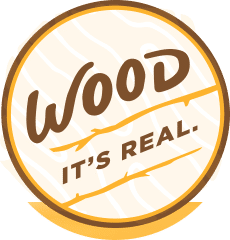Stepping into the lumber aisle can be intimidating, especially if you’re not familiar with different types of wood. Once you understand some of the basics, buying lumber becomes much easier. Learn more about what’s really happening in the lumber aisle and how you can shop without stress for your next project.
8 Considerations for Your Visit to The Lumber Aisle
1. Know What You’re Building
This needs to be determined before you get to the store. Write down the required dimensions, number of boards, and whether the wood will be used inside or outside. Bring these measurements with you as there are few things more frustrating than getting home and realizing that you needed a different board length or width.
2. Decide If Your Project Is Structural or Decorative.
Knowing the purpose of your project will guide the type of lumber you need. Structural projects, like framing or support beams, require wood that meets building codes for strength and durability. Decorative projects, on the other hand, like trim or cabinetry, call for lumber chosen for its smooth finish and visual appeal. The grade and species of wood you choose will depend on this distinction.
While there are many wood options, Southern Yellow Pine continues to be a top choice for construction projects across the U.S. because of its versatility, strength, and availability. If you opt to build with Southern Yellow pine, you’re choosing a material that offers great structural integrity and takes finishes beautifully.
4. Understand Pressure-Treated Pine.
Pressure-treated pine is lumber that has been chemically treated to resist insects, rot, and decay. This makes it a necessary choice when working on outside projects, like decks, raised garden beds, pergolas and fences.
5. Know When To Use Softwood or Hardwood.
Hardwoods like oak and maple are great choices for cabinetry, furniture, and other visible applications that require a fine finish. Softwoods, such as Southern Yellow Pine, are excellent choices for outdoor projects, framing and structural work, decking, shelving and DIY furniture. Because softwoods grow faster than hardwoods, they are considered a more sustainable source of wood and are usually the cost-effective choice for home DIY projects. You’ll want to spend some time researching your options and choosing the right material before you get to the lumber aisle.
6. Learn To Read A Lumber Stamp.
A lumber stamp appears on most basic lumber you will find in a lumber aisle. It’s traditionally black ink and no larger than 2” x 4”. The stamp has information on which sawmill produced the lumber, the species of wood, the national inspection agency overseeing the lumber grading and what grade the lumber is. You can find more lumber stamp information through the link here.
7. Choose The Right Grade.
Most pieces of lumber receive a grade based on its structural soundness and appearance. For most DIY projects, #2 grade or construction grade lumber is a viable choice. For furniture and other visible pieces, select or appearance-grade wood is your best bet.
8. Don’t Be Afraid To Ask For Help.
Most stores that sell lumber have professionals on hand who can help you choose the right pieces for your project.
You’ve Got This. Really!
With a little preparation and the right information, the lumber aisle doesn’t have to be overwhelming. Walk in with confidence when you have your measurements and some key facts under your toolbelt. Whether you’re building a backyard deck, a custom bookshelf, or simply exploring your DIY potential, understanding wood types, treatments, and grades puts you in control. You are ready to shop smarter and build better.






